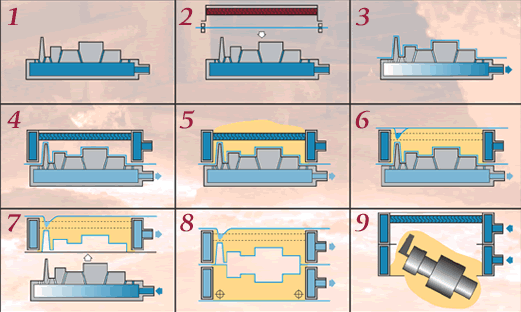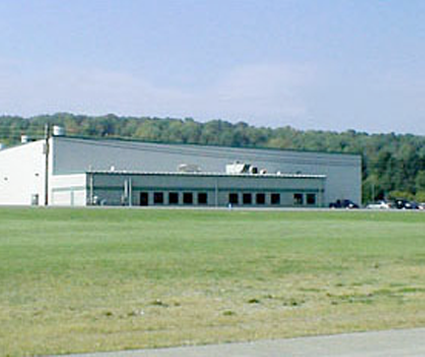The V-Process is an innovative and agile manufacturing process that allows for flexibility and superior castings. It is a form of sand casting but unlike other sand processes that use coarse sand held in shape with a binder, the V-Process utilizes very fine, dry sand and no binders. The sand is held in shape by vacuum packing the sand between sheets of thin plastic film. This vacuum causes the sand to become hard much like a vacuum packed brick of coffee. The pattern is removed and metal poured into the cavity. The vacuum is released and the casting removed.
The results are thinner walls, cosmetically smooth surface finishes, tighter tolerances and vertical walls because v-process requires no draft angles. To see how V-Process compares to other types of cast aluminum manufacturing view our Process Comparison.
The patterns are inexpensive to build using RenShape Polyurethane and can easily be modified for quick rev changes. V-Process patterns also have an unlimited tooling life since the sand touches the plastic film and not the actual pattern. This also means that V-Process can produce vertical walls and requires no draft angles.
V-Process Overview
 Step 1: The pattern (with vent holes) is placed on a hollow carrier plate.
Step 1: The pattern (with vent holes) is placed on a hollow carrier plate.
Step 2: A heater softens the .003″ to .008″ plastic film. Plastic has good elasticity and a high deformation ratio.
Step 3: Softened film drapes over the pattern with 200 to 400 mm Hg vacuum acting through the pattern vents to draw it tightly around the pattern.
Step 4: The flask is placed on the film-coated pattern. Flask walls are also a vacuum chamber with the outlet shown at right.
Step 5: The flask is filled with dry, unbonded sand. A slight vibration compacts sand to maximum bulk density.
Step 6: A sprue cup is formed and the mold surface leveled. The back of the mold is covered with unheated plastic film.
Step 7: Vacuum is applied to the flask. Atmospheric pressure then hardens the sand. The vacuum is released, pressurized air is introduced into the carrier and the mold is stripped.
Step 8: The cope and drag assembly form a plastic-lined cavity. During pouring, molds are kept under vacuum.
Step 9: After cooling, the vacuum is released and free-flowing sand drops away leaving a clean casting, with no sand lumps. The sand is cooled for re-use.
Learn More
To learn more about the technical design of V-Process castings you can download the Technical Design Guide for detailed recommendations. Contact our technical sales manager for any questions – Contact Us

